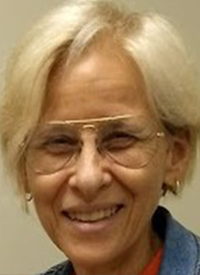Opinion: Innovative Strategies Improve Travel Nurse Orientation at Major Cancer Center
At the 48th Annual Oncology Nursing Society Congress, nurses shared how they improved travel nurse orientation at their institution.
Debi Fischer, MSW, BSN, BA, LCSW, RN

In this column, I looked at outcomes from a travel nurse orientation program that were recently presented in a poster at the 48th annual Oncology Nursing Society (ONS) Congress.1 This poster was presented by Clare Acquilano, BSN, RN, who is a staff nurse at the Wilmot Cancer Institute, in Rochester, New York.
The poster highlights how changes in health care after the pandemic have increased the need for travel nurses. As a result, better orientation for travel nurses has become important. To streamline the onboarding process, Acquilano’s team created a binder of resources to guide the travel nurses through their 3-day orientation process, which included an introduction to the unit, online education modules on the electronic medical record, and individual time with a preceptor. They were also given a “Don’t Forget” cheat sheet to place behind their badge to help them remember unit-specific items such as verifying the pump rate at the end of every shift, conducting pain reassessments every 30 minutes to 1 hour after administering pain medication, and more.
Surveys were provided to the nurses to evaluate the intervention. Responses showed that 100% of the orientees found the orientation helpful, and 80% of staff felt the length of orientation was adequate and that the nursing guidelines were clear.
I have always enjoyed travel nursing. I worked locally in the Miami, Florida area for several years for different agencies. In addition, I am very well acquainted with several travel nurses who have decided to become staff nurses after their contracts ended. I therefore feel well suited to comment on this poster. These nurses worked for travel firms during the height of the COVID-19 pandemic and they were compensated very well. One friend of mine shared that they were able to pay off their student loans and their house through travel nursing. These nurses were very experienced in terms of skills. They also had a very flexible and fearless mentality.
I will go through this poster’s different sections and give my thoughts.
Context of the Research
I agree with the study authors that staffing needs changed after the pandemic. This affected the need for travel nurses. However, although there are still COVID-19 patients being admitted into the hospital, the severity has lessened. This impacts the need for travel nurses and their high-end salaries.
I want to address the question of breaching staff knowledge deficits and note that this can be accomplished by providing in-service education, if necessary. I have seen RN educators come in at 7:00 am and grab night shift nurses about to leave for in-service reviews. Although RNs may be about to clock out or are in the middle of shift change, there are usually a few minutes lag time since everyone cannot give report at once. Instead of a nurse sitting there and waiting to give a hand-off report, an impromptu education session for even 5 minutes will help the nurse traveler.
Another piece of improving knowledge deficits are product demonstrations. Although I work at night, at least once or twice a month there are product demonstrations of new items being rolled onto the unit. We just had a demonstration of a new bed recently and a vacuum-powered lift device. The RN product representative went to the different floors a few nights later and did 1-on-1 in services with nurses who wanted a quick review. This actually worked out better because there was a chance to ask questions you might not have thought of during the initial session.
The Intervention
I do not know how realistic a 3-day orientation is for travelers. To be honest, the most I have seen is 4 hours. But that depends on the facility. This would depend on the unit needs and how specialized it is. For instance, my experience has not been in an ICU unit, so that might impact what I have experienced.
In my opinion, the required items in the form of cheat sheet behind the badge is a great idea.This is my favorite part of this poster. The educators provided a synopsis of what is expected of the travel nurse during the shift. It gives exact time frames for documentation, vital signs, and dressings for IV devices. That means no excuses and no guesswork. Again, I have seen similar lists attached to PCs where charting is done. It is a very helpful reminder of what is expected during the shift.
Discussion
It seems the travel nurse orientation process was a big success. 100% of travel nurses said they wanted to renew their contracts1. What more could you ask for, especially in a cancer center where the needs are so great?
Reading about the travel nurse orientation gave me some insight into what other cancer hospitals are doing to retain their travelers. That is always great knowledge to have, and it will give the oncology RN insight into what other nurses go through daily.
Reference
Aquilano C. Travel nurse orientation. Presented at: 48th Annual Oncology Nursing Society Congress; April 25-30, 2023; San Antonio, TX. Accessed May 23, 2023. https://ons.confex.com/ons/2023/meetingapp.cgi/Paper/13283


